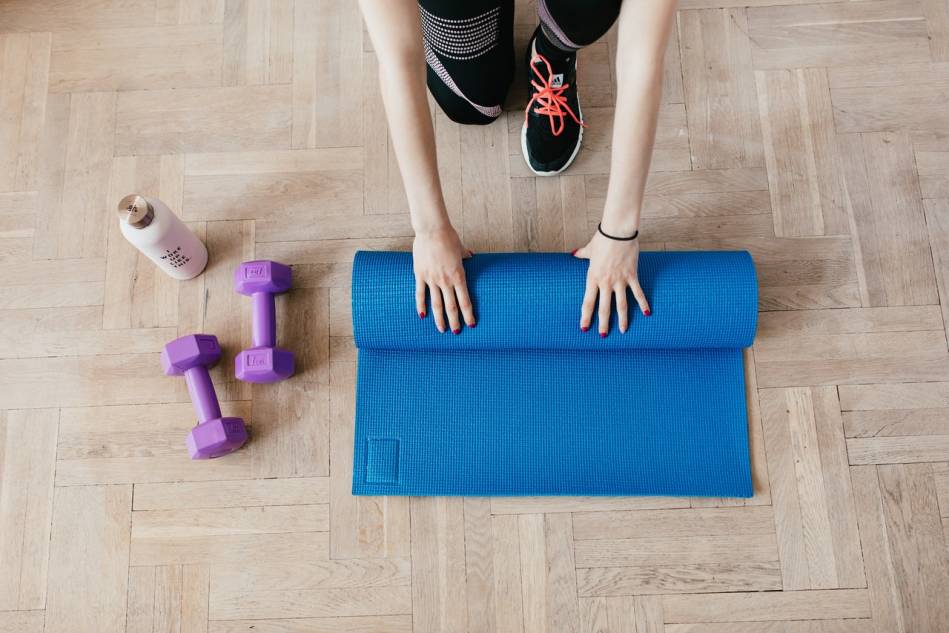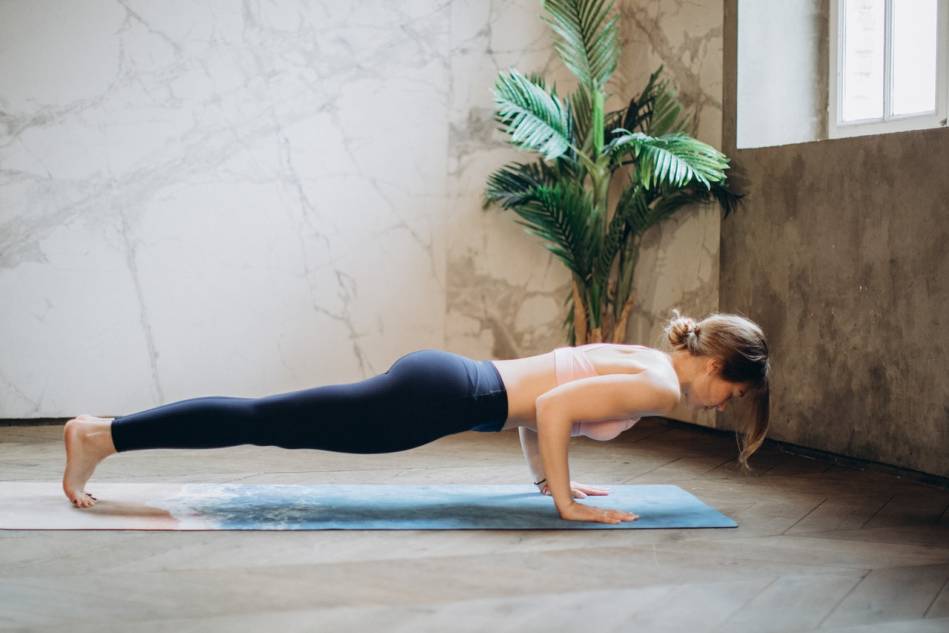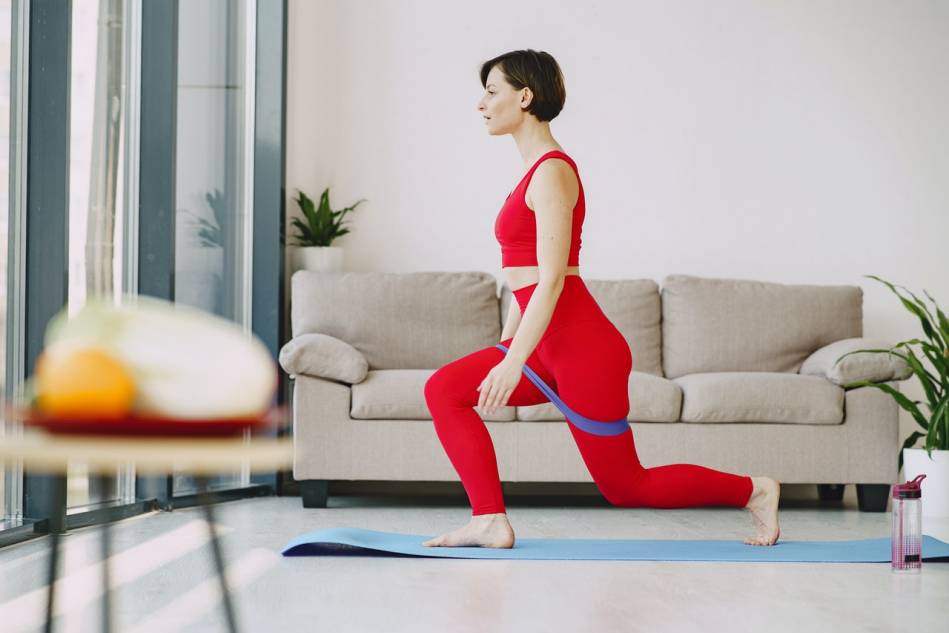
Home Workout Plan for Beginners – 5 Days – 30 Minutes

Exercise improves muscle development in size and strength and boosts endurance; it also helps reducing anxiety, depression and negative moods. In this article we set up a 30-min workout routine for beginners, for 5 days a week; a great way to start ripping off the benefits of an active lifestyle.
Before you begin
Before you take your pre-workout and put on exercise clothes, there are important things to consider and prepare to make sure you can make a habit out of this routine and that you will not be abandoning after the first couple of days. Let’s review the most common questions we get from people who want to start training at home.
-
What equipment will be necessary for home workout?
Training at home is very friendly with your budget, as there are plenty of exercises you can do without any equipment. But if you want to diversify the exercises, there are a lot of options that are not expensive and they are very easy to keep and integrate at home, without the need for gym machines. Dumbbells, kettlebells, resistance bands, sliders, jumping rope, pull up bars, a TRX, a yoga mat and maybe even a workout bench can be added to your shopping list.
-
What equipment can be useful for muscle building workout and for weight loss workout?
The principle for this is simple. In order to lose weight, the body needs to be in a state of calorie deficit, meaning that the body needs to be burning more calories than the amount of calories you eat; this is usually achieved by performing exercises that increase the heart rate and also by keeping a regular diet to control de amount of calories taken. This way the body will have to break down fat cells to use them as a source of energy.
On the other side, in order to gain muscle the body needs to have enough calories that can provide energy for the muscles to recover from an intense workout. Muscle growth and development occur when your body is recovering from muscle injuries caused by exercise. When you exercise with heavy weights, your muscle fibres break, and then regenerate and grow when your body is at resting state.
So what equipment is better for what? Whichever helps you achieve what we’ve just explained above. Resistance bands, TRX, dumbbells and kettlebells are great tools for providing a workout hard on your muscles, while sliders, jumping rope, TRX and cardio exercises can help the body go into fat-burning state.
-
What kind of household items can I turn into workout equipment?
As mentioned before, training at home does not mean you need to stock up with exercising tools. You can easy use large bottles filled with water and backpacks with books as weights, or towels as sliding surfaces. You can also use chairs or tables as benches, cushions as BOSU balls or a rope as suspension trainer. It’s all about getting resourceful and creative.
-
How to train after injury?
If you have recently suffered an injury, or you have any health condition such as heart disease, blood pressure problems, diabetes or cardiovascular problems, do not start a workout routine before consulting with your doctor. Ask first about the potential risks and the needed modifications in your routine for you to stay healthy and safe during your workout.
-
How to start dieting for the best result?
Although the first thing people think about when it comes to achieving their fitness goals is their workout, few realize that a meal plan specially customized to their needs and daily activity does most of the job; 80% of the results can be drive just by the diet. Every one has a different level of activity, everyone has a different metabolic rate, and everyone has different diet preferences. A successful meal plan is one that successfully covers these three, being personalized to one’s needs. In this article we help create your own meal plan.

How long should you workout?
When you are a beginner, you shouldn’t be thinking of starting a long and too extreme workout routine, as your body isn’t prepared for it. Shorter training sessions are great to start building up strength and endurance that will continuously improve, while you increase the intensity of the trainings through time. Although your motivation might be telling you to go as hard as possible, your body needs to start at a lower pace so, shorter consistent workouts are a great starting point to challenge your body, without causing leading to extreme exhaustion that might end up in negative effects.
Listening to your body is important and it will tell you when to stop so pay attention to any warning signs such as muscle acidosis or extreme shortness of breath. If training is too hard at the beginning, try breaking down the workout into shorter circuits and remember there important thing is not how big you start but how can you slowly progress and add intensity, week after week, for a more consistent development.
The importance of heart rate measurement is rarely discussed too; heart rate is the number of heartbeats per minute, which increases during exercise to ensure that the need for oxygen and nutrients in the muscles is quickly met. Learn how to measure it and how to optimize it according to the goals your want to reach. This will also help your determine the length of your workouts.
5 days home workout routine
Here you can find a workout routine for 5 days. Each day is different, according to the movement patterns and targeted areas. First, there are necessary things you should keep in mind if you want to start working out at home. These are:
-
You should finish several exercises with an extra set where you train until failure (you should fatigue the muscle). This will support you building muscle mass.
-
Keep the resting time as short as you can. 1 minute maximum should be enough.
-
Focus on progression. Working out home is limited, you do not have much equipment, but still, you should think about other methods of overloading. For example, increasing the reps week after week, slowing down the tempo (so your muscle works under tension for a longer period of time), etc.
-
The first number indicates the number of sets, the second the number of repetitions. For example, “3×15-20 + 1x until failure”, means you’ll do 3 sets of 15-20 repetitions, and one final set doing as many repetitions as you can until you reach muscle failure.
-
Exercises marked with the same letter go together. Meaning you do one set of A1 exercise, immediately followed by one set of A2, without rest. Then you rest and do the exercises again, and so on until you complete your 4 sets. Then you move on to the B exercises.
Day 1 – Upper body push workout
-
A1 – Chest press with resistance band / 3×15-20 + 1x until failure
-
A2 – Pike shoulder press / 4×15-20
-
B1 – Normal pushup (shoulder wide) / 4×15-20
-
B2 – Dips on a chair or a table / 3×15-20 + 1x until failure
-
C1 – Diamond pushup / 3×15-20 + 1x until failure
-
C2 – Pushup plus (Serratus anterior exercise) / 4×15
Day 2 – Cardio workout
You can start with higher or lower repetitions according to your skill level, just keep this reverse pyramid routine. Between the sets you rest 30-60 seconds.
-
A – Jumping ropes 75 times
-
B – Jumping ropes 70 times
-
C – Jumping ropes 65 times
-
D – Jumping ropes 60 times
-
E – Jumping ropes 55 times
-
F – Jumping ropes 50 times
-
G – Jumping ropes 50 times
-
H – Jumping ropes 50 times … then E, D, C, B, A again.

Day 3 – Upper body pull workout
-
A1 – Chin ups / 4x 12
-
B1 – Inverted row with table / 4x 12
-
B2 – Bicep curl with resistance band / 3×20 + 1x until failure
-
C1 – Reverse fly with resistance band / 4×15-20
-
C2 – Superman / 4x 15-20
-
C3 – Lateral raise with resistance band / 4×15-20
Day 4 – Core workout
-
A1 – Palloff press with resistance band / 3×15 + 1x until failure
-
A2 – Bear crawl / 4×30 seconds
-
B1 – Bodysaw with towel / 3×30 seconds + 1x until failure
-
B2 – Hand walkout / 4×5
-
B3 – Bicycle crunches / 4×30 seconds
-
C1 – Burpee / 4×10

Day 5 – Lower body push-pull workout
-
A1 – Squats with resistance band / 4×20-30
-
A2 – Leg curl with towel / 3×15 + 1x until failure
-
B1 – Bulgarian split squats with chair or small box / 4x 12
-
B2 – Sidewalk with mini band / 4x60s
-
C1 – Hip thrust on the floor with mini band / 3×20-30 + 1x until failure
-
C2 – Hip opening on the floor with mini band / 3×20-30 + 1x until failure